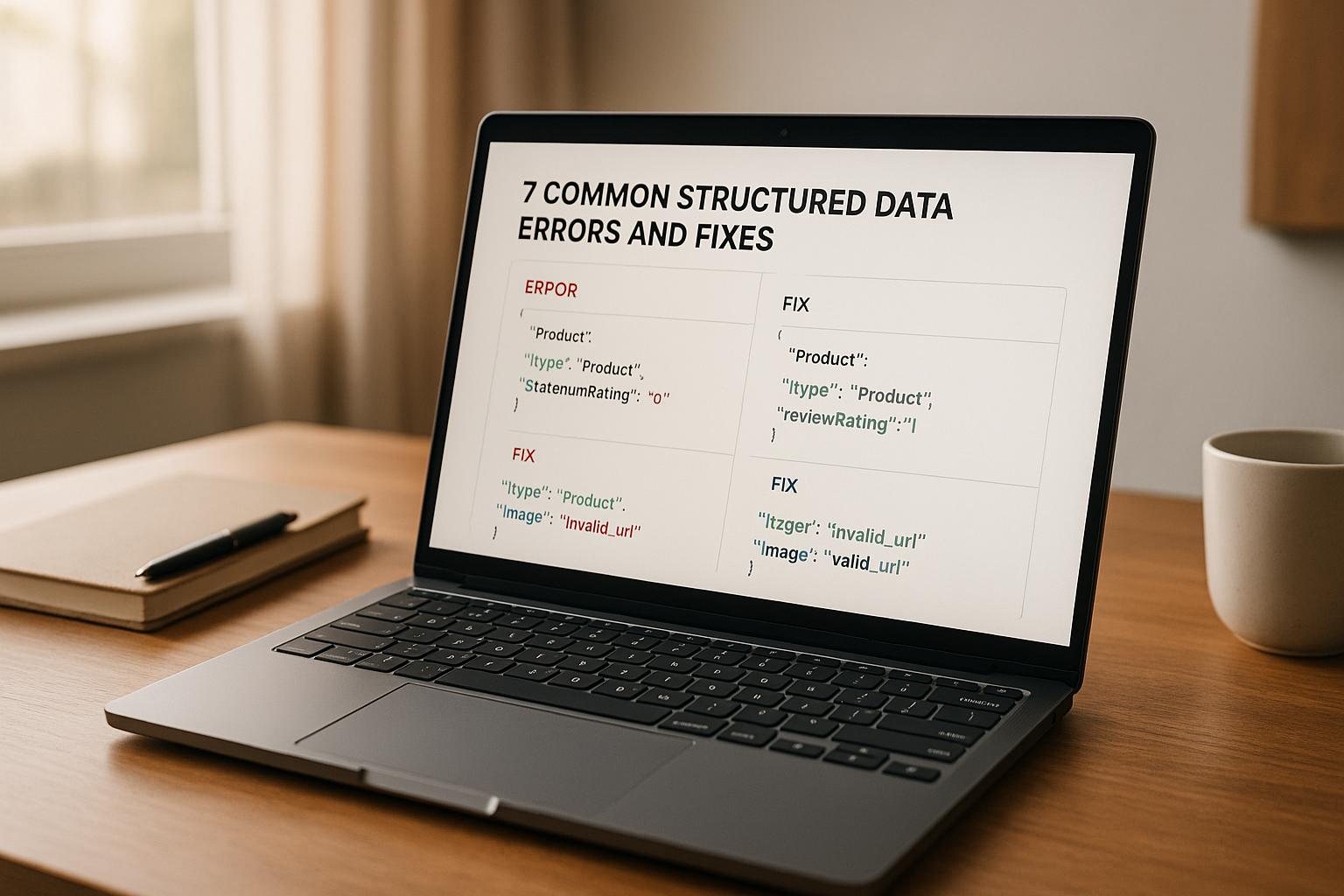Local keywords are essential for businesses targeting specific geographic areas. They help attract local audiences, improve visibility, and increase foot traffic. Here's how to find and use them effectively:
-
Understand Local Keywords:
- Explicit: Includes location (e.g., "Italian restaurant in Brooklyn").
- Implicit: Implies local intent (e.g., "locksmith near me").
-
Why They Matter:
- 46% of Google searches have local intent.
- 72% of users visit a store within 5 miles after a local search.
- Helps small businesses compete locally.
-
Steps to Find Local Keywords:
- Map Your Service Areas: Focus on primary, secondary, and extended regions.
- Add Location Terms: Use city names, neighborhoods, or landmarks.
-
Use Tools:
- Semrush: Paid tool for keyword data and trends.
- Google Keyword Planner: Free tool for search volume and competitor analysis.
- Google Suggestions: Use autocomplete and related searches for ideas.
-
Evaluate Keywords:
Focus on search volume, competition, and user intent to prioritize terms like "emergency plumber in Seattle" over generic ones. -
Actionable Tips:
- Combine services with locations (e.g., "roof repair in Natick").
- Target specific needs like "24/7 locksmith near me."
- Monitor performance and adjust your strategy regularly.
Local keywords are a cost-effective way to connect with nearby customers and grow your business.
How to Do Local Keyword Research for Your Small Business
Choosing Your Target Locations
Plan your local keyword strategy by focusing on specific areas where your business operates.
Map Your Service Areas
Start by outlining the areas you serve based on your business model. Did you know that 76% of local searches lead to a visit within one day?
Here’s how to determine your service areas:
- Operational Range: Keep your coverage within a 2-hour drive.
- Market Demand: Look into local demographics and the services people need.
- Competition Level: Check out the businesses already operating in those areas.
Once you’ve identified your areas, group them into tiers for better organization:
| Priority Level | Number of Areas | Purpose |
|---|---|---|
| Primary Markets | 3 locations | Focus on your most profitable service areas. |
| Secondary Markets | 5-10 locations | Target areas for growth and expansion. |
| Extended Reach | Up to 20 total | Broaden your reach to the maximum allowed. |
With these tiers in place, you can tailor your keyword strategy to fit each region.
Add Location Terms
Once you’ve mapped your service areas, it’s time to add location-specific keywords. Remember, 46% of Google searches are local.
Here are some effective ways to incorporate location terms:
- City-Based Terms: Use official city names.
- Neighborhood Names: Include popular district or neighborhood names.
- Landmark References: Mention well-known local landmarks.
For example, a roofing company might optimize for "roofing in Brockton" and "roof repair in Natick" to rank better in those areas. Similarly, a Seattle bakery could boost its visibility with phrases like "Seattle wedding cakes". These specific terms make it easier for locals to find your business.
Building Your Local Keyword List
Create a list of local keywords to better reach your customers.
Basic Keyword Selection
Start by identifying the main services or products your business offers, then pair them with location-specific terms. As Neil Patel points out, "Local keyword research helps small businesses reach potential customers in their area".
Here are some keyword structures to guide you:
| Keyword Structure | Example Combinations | Search Intent |
|---|---|---|
| [Service] in [City] | Plumbing in Sedona | Service-seeking |
| [Profession] near [City] | Dentist near Aspen | Location-based |
| Best [Product] shops in [City] | Best coffee shops in Eureka | Quality-focused |
| [City] famous for [Product] | Key West famous for seafood | Informational |
| [Service] specials in [City] | Massage specials in Galena | Deal-seeking |
Focus on:
- Core services or products
- Variations of your location (city, neighborhood, district)
- Common descriptors like "best", "top", or "affordable"
- Specific areas or landmarks near your business
To go further, use Google's tools to uncover what real users are searching for.
Google Search Suggestions
Google's built-in tools can help you expand your keyword list with terms that reflect actual search behavior.
Here’s how to get the most out of them:
- Google Autocomplete: Start typing your service and location into Google’s search bar. For example, entering "plumber in" will show you popular city or neighborhood combinations people are searching for.
- Related Searches: Scroll to the bottom of Google’s search results page. The "related searches" section offers additional keyword ideas based on user patterns.
-
Add Intent Modifiers: Tailor your keywords to reflect specific customer needs. Examples include:
- Emergency services: "24/7", "emergency", "same-day"
- Quality assurance: "licensed", "certified", "professional"
- Price-focused terms: "affordable", "cheap", "premium"
- Time-specific needs: "weekend", "late-night", "holiday"
These methods will help you build a keyword list that aligns with your customers' search behavior and boosts your local visibility.
sbb-itb-5be333f
Local Keyword Research Tools
Local keyword research tools help you identify search volumes and trends specific to a region. Here are some of the most effective options you can use.
Best Tools for Local Keywords
Semrush is a powerful option for local keyword data, offering insights from a database of 25 billion search terms. Its local SEO features include:
| Feature | Purpose |
|---|---|
| Map Rank Tracker | Monitor rankings across multiple locations |
| Keyword Gap Tool | Spot untapped local keyword opportunities |
| Local SEO Toolkit | Optimize your Google Business Profile |
| Organic Research | Find high-performing local search terms |
The Pro plan starts at $139.95 per month, with optional local SEO add-ons costing between $20 and $40 monthly.
Looking for free tools? Let’s check out Google Keyword Planner.
Using Google Keyword Planner

Google Keyword Planner is a free tool that offers valuable insights into local search trends. To get the most out of it:
-
Set Geographic Targeting
Focus on specific locations to ensure the data aligns with your target market. -
Explore Competitor Keywords
Use the "Start With a Website" feature to analyze competitors in your area and find overlooked keywords. -
Understand Search Volumes
Keep in mind that the "Competition" metric reflects ad competition, not SEO difficulty.
For more options, check out the curated tools in the directory below.
Top SEO Marketing Directory

The Top SEO Marketing Directory is a resource for finding top keyword research tools tailored for local SEO. Their Premium plan ($49/month) offers access to advanced tools and agency listings.
Key features include:
- Searchable database by zip code or city
- Integration with consumer behavior analytics
- Tools for managing reviews
- Competitor analysis features
These tools can help you sharpen your local keyword research and improve your SEO strategy.
Picking the Right Local Keywords
Check Search Numbers and Competition
When choosing local keywords, focus on search volume and competition. Remember, the top organic result attracts 19 times more clicks than the leading sponsored ad.
Here’s how to evaluate keywords effectively:
| Metric | What to Look For | Why It Matters |
|---|---|---|
| Monthly Searches | Consistent search volume locally | Reflects steady demand in your area |
| Keyword Difficulty | Lower scores (under 50) | Easier to rank for |
| Search Intent | Matches your business offerings | Ensures relevant traffic |
| Competition Level | Balance difficulty with opportunity | Helps target achievable goals |
| Trend Direction | Stable or increasing popularity | Indicates long-term potential |
If you’re using tools like Semrush's Keyword Magic Tool, start broad and refine with location-specific terms. For instance, while "dentist" may face stiff competition, a keyword like "emergency dentist in Phoenix" is more targeted and often easier to rank for.
Match Keywords to Customer Goals
Keywords should align closely with what your customers are looking for. Amanda Jordan sums it up well:
"Local keyword research gives you a window into the psyche of your target clientele".
Different search patterns can guide your keyword strategy:
- Service-Based Searches: Combine your service with location-specific terms. Instead of just "bakery in Miami", target phrases like "custom birthday cake delivery Miami" to capture more precise intent.
- Question-Based Queries: Many local searches are phrased as questions, showing a clear informational need. These often have less competition. For example, "Where can I get gluten-free pastries in Miami?" targets a specific audience with a clear goal.
- Emergency Services: For urgent needs, include time-sensitive modifiers. Local pack listings get 15.1% to 17.6% of clicks, making them essential for businesses like "24-hour locksmith downtown Seattle" or "emergency plumber near me".
- Comparison Shopping: Use comparison-focused keywords such as "best auto repair shops in Portland." The top organic listing here often gets more clicks than all listings from positions #3 through #10 combined.
Conclusion: Local Keyword Research Steps
Summary
To effectively target regional search intent, local keyword research requires a structured approach. With an increase of over 80% year over year in local searches and a growing trend in "near me" queries, understanding how to align your strategy with these behaviors is essential.
Here’s a breakdown of the key phases involved:
| Research Phase | Core Activities | Expected Outcome |
|---|---|---|
| Initial Planning | Define service areas and solutions | Clear targeting framework |
| Keyword Discovery | Use tools to identify location-specific terms | Comprehensive keyword list |
| Evaluation | Analyze search volume and competition | Prioritized keyword opportunities |
| Implementation | Assign keywords to specific URLs | Optimized content strategy |
| Monitoring | Track rankings and performance | Data-backed adjustments |
Now, let’s translate these concepts into actionable steps.
Action Items
-
List Core Services: Combine your main services with location-specific terms. Maria Harutyunyan, CEO of Loopex Digital, emphasizes the importance of local optimization:
"Optimizing your Google Business Profile with accurate details, leveraging localized content, building high-quality citations, and encouraging customer reviews are key tactics that help establish your business as a trusted local authority."
- Leverage Professional Tools: Explore resources like the Top SEO Marketing Directory to find tools that provide local search volume data and competition analysis for better keyword targeting.
- Monitor Trends and Performance: Keep a close eye on how your keywords perform. For instance, searches like "who has in stock" have skyrocketed by over 8,000%, demonstrating the need to adapt to shifting trends.
Example: Kody Smith managed to grow his pet waste removal side hustle into a $300,000-a-year business - all without spending a dime on advertising.


